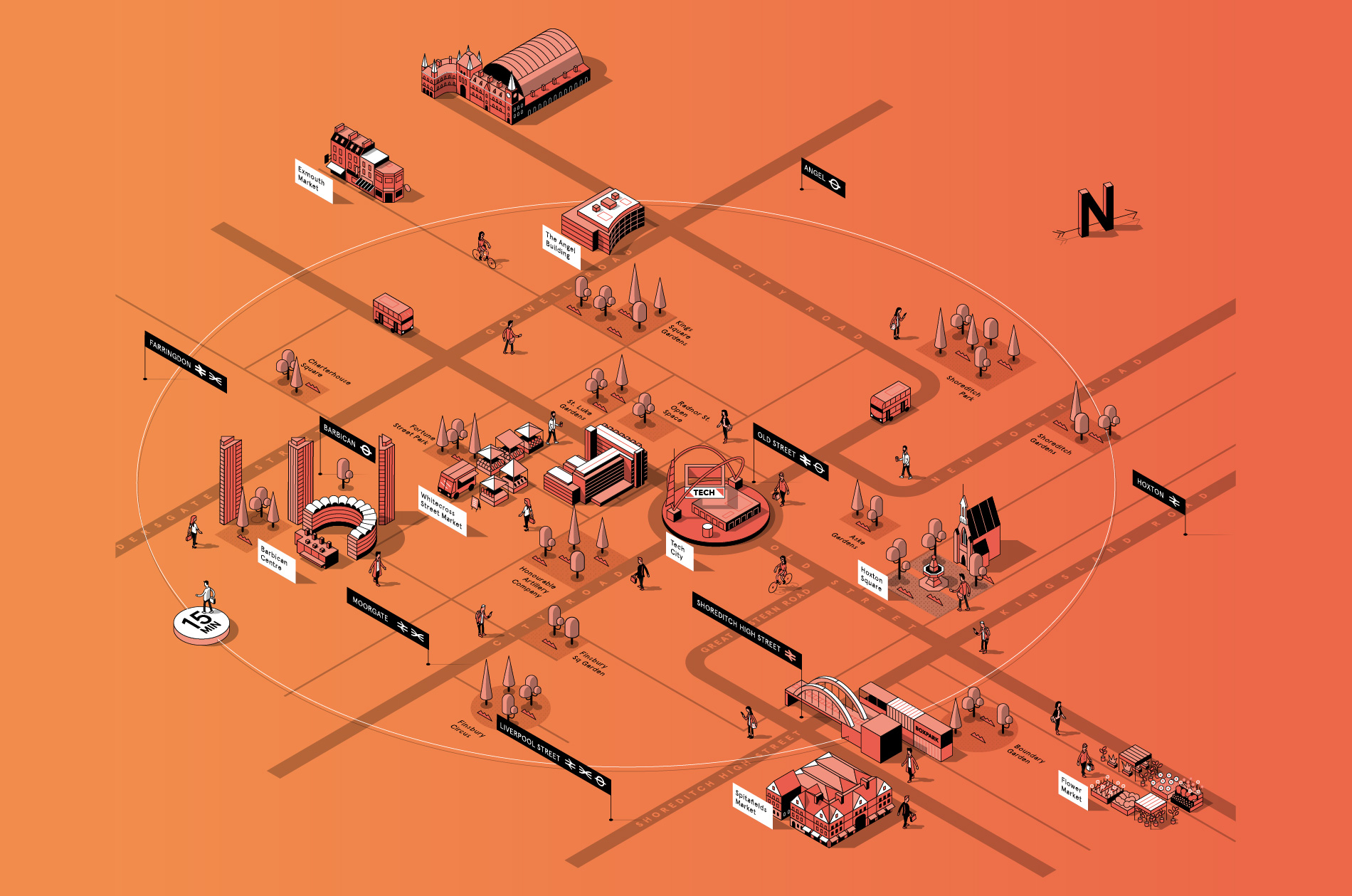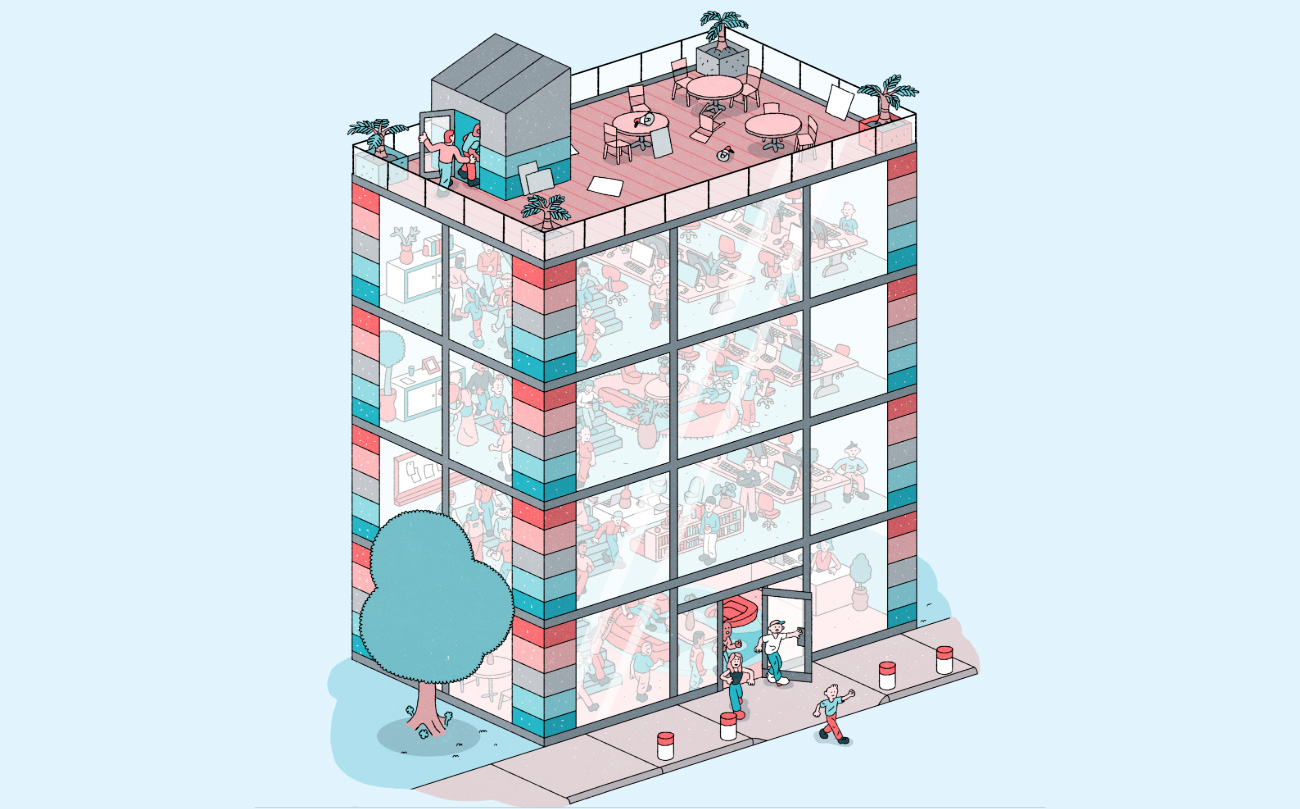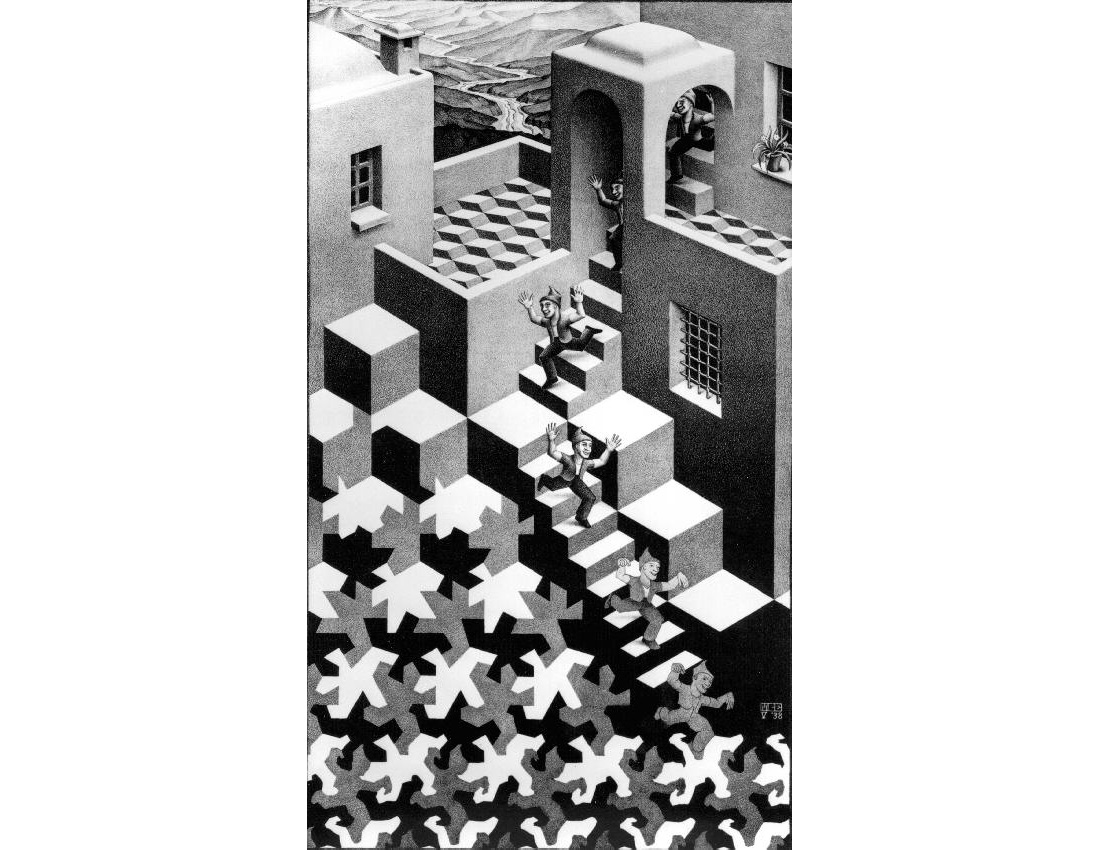Isometric drawing: a designer's guide
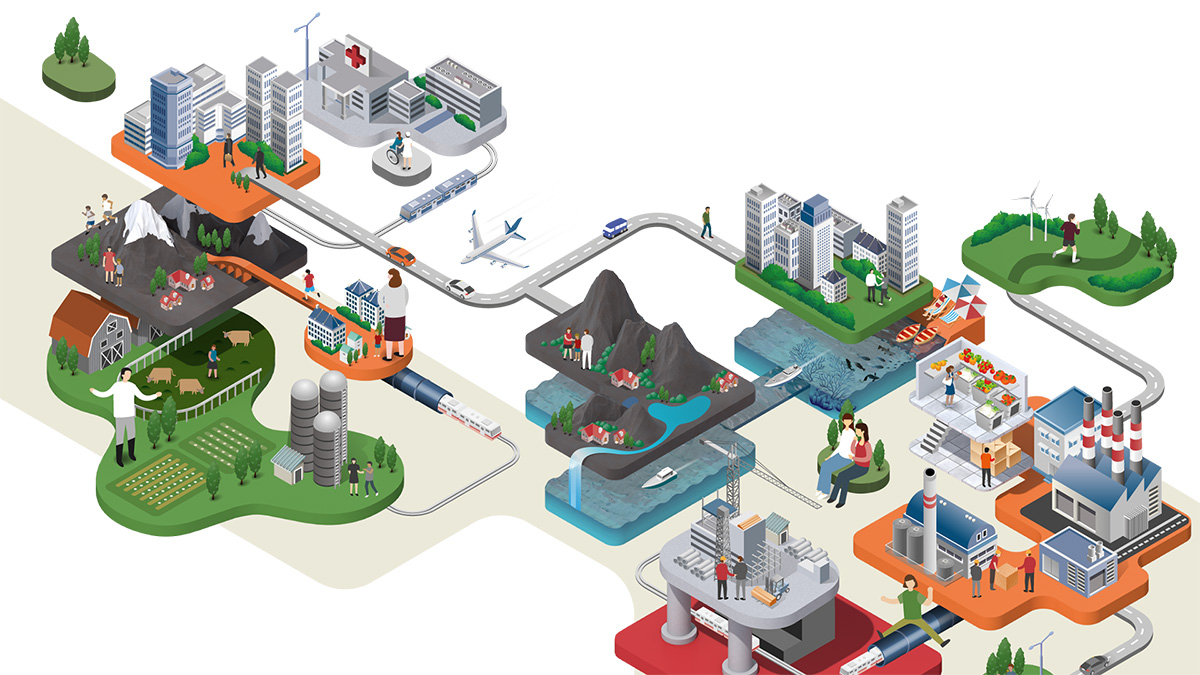
Wondering how to do Isometric drawing? Sometimes called isometric projection, this type of 2D drawing is used to draw 3D objects using 30-degree angles. It's also a type of axonometric drawing, meaning that the same scale is used for every axis, resulting in a non-distorted image. Since isometric grids are pretty easy to set up, once you understand the basics of isometric drawing, creating a freehand isometric sketch is relatively simple.
Below we explain what isometric drawing is and how to make isometric drawings of your own, starting by making an isometric cube. We'll also look at how isometric drawing differs from one-point perspective, and what it's use for, with some example illustrations. If you want to work digitally and need to upgrade your setup, make sure you see our pick of the best drawing tablets.
What is isometric drawing?
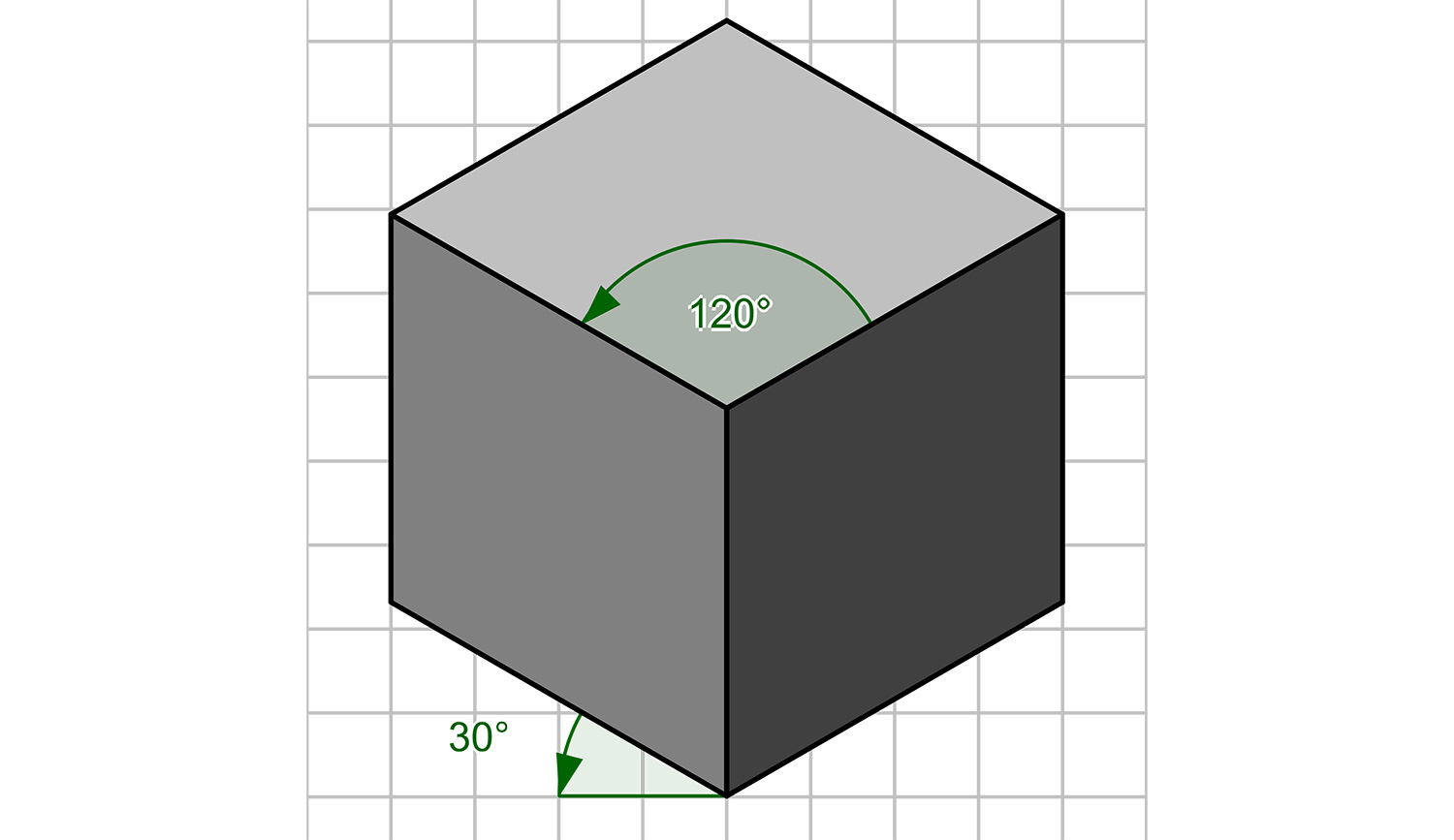
An isometric drawing is a 3D representation of an object, room, building or design on a 2D surface. One of the defining characteristics of an isometric drawing, compared to other types of 3D representation, is that the final image is not distorted and is always to scale. This is due to the fact that the foreshortening of the axes is equal (the word isometric comes from Greek to mean 'equal measure')
Isometric drawings are a good way to show measurements and how components fit together, and is used in technical drawing, often by engineers and architects. They differ from other types of axonometric drawing, including dimetric and trimetric projections, in which different scales are used for different axes to give a distorted final image.
In an isometric drawing, the object appears as if it is being viewed from above from one corner, with the axes set out from this corner point. Isometric drawings begin with one vertical line along which two points are defined. Any lines set out from these points should be constructed at an angle of 30 degrees.
Isometric drawing vs one-point perspective
Both isometric drawings and one-point perspective drawings use geometry and mathematics to present 3D representations on 2D surfaces. One-point perspective drawings mimic the human eye, so objects appear smaller the further away they are from the viewer. In contrast, isometric drawings use parallel projection, which means objects remain at the same size, no matter how far away they are.
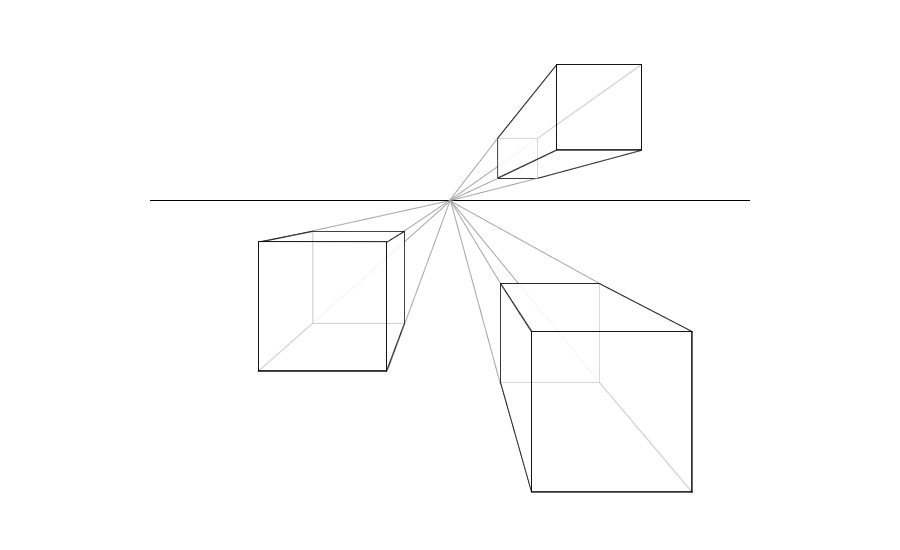
Basically, isometric drawing doesn’t use perspective in its rendering (i.e. lines don’t converge as they move away from the viewer). Isometric drawings are more useful for functional drawings that are used to explain how something works, while one-point perspective drawings are typically used to give a more sensory idea of an object or space.
Daily design news, reviews, how-tos and more, as picked by the editors.
The limitation of isometric drawings compared to 3D models is that you can't change your vantage point, you have to see the drawing from the top viewpoint.
How to draw an isometric cube
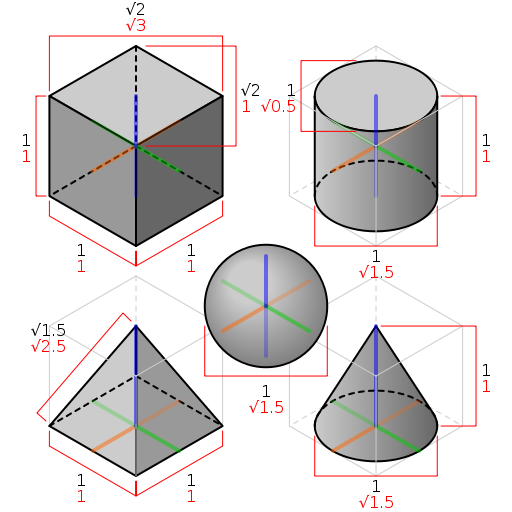
The most common isometric drawing is that of a cube, and drawing a cube using isometric projection is very easy. You will need a piece of paper, ruler, pencil and protractor (or for the shortcut version, using gridded paper, jump to the next section).
Using the ruler, draw a vertical line on the page, and mark three equally spaced points along it. Draw a horizontal line through the lowest point, and using the protractor, mark out a 30 degree angle up from the line on either side. Draw a line back through the lowest point from the 30 degree angle on each side.
Repeat this step through the middle point and the same through the top point, but with the top point, mark out the angle downwards. The lines from the second and third point will cross at a certain point, and from this intersection, draw a vertical line down towards the angled lines coming from the bottom point. You should be able to see the form of the cube where all of the lines intersect.
How to create an isometric grid
For all the cheats out there who don’t have the tools (or inclination) to create an isometric projection, there is a foolproof way to bash out your axonometric drawing: simply use an isometric grid. The pattern can be downloaded online, and will save you lots of time and effort, or you can have a play with the grid using this isometric drawing tool. Alternatively, learn how to set up your own grid in Illustrator or Photoshop by following the video tutorial below.
Once your eyes become accustomed to the trickery of the triangular pattern, you will immediately notice how the isometric works. The super handy thing about the grid is that it already has all of the 30 degree angles set up for you. This tutorial walks you through how to draw a cube using an isometric grid.
Why do designers do isometric drawings?
One of the main advantages of isometric view is that it gives a realistic and balanced impression of the object, without any perspective or distortion. It also allows you to see all three faces of the object at the same time, which can be useful for showing complex shapes or details.
What are isometric drawings used for?
Isometric drawings are used by architects, industrial and interior designers and engineers to visualise, rooms, products, and infrastructure. They're a great way to quickly test out different design ideas. They also illustrate the 3D nature of an object, without being drawn in 3D software, and measurements can be made to scale along the principal axes.
Exploded isometric drawings are useful for revealing parts of a product that might be hidden or internal. They're used by architects, engineers and product designers the world over to better explain the intricacies of a design. To create an exploded isometric, you need to know the detailed inner workings of whatever you are drawing, so they're are usually used at the final design stage for presentations to clients.
There are a number of other situations in which isometric projection is useful. In wayfinding systems, for example in museums or galleries, isometric wall maps can show visitors where they are in the building, what is going on elsewhere, and how to get to get around.
Some of the best infographics use isometric projection to enable them to show more information than would be possible in a 2D drawing. Some of the best logos also use this approach to create impact.
What's the difference between isometric projection and oblique projection?
Isometric drawings and oblique projections are both techniques that are used by engineers in technical drawings and illustrations, but there's a difference in the angle used.
An oblique projection puts more focus on the front side of an object, the face. They're made using oblique grid paper an 45-degree lines. As such, it's not possible to see the front of an object straight on and the side at the same time, but oblique projections can be useful for quick sketches or to show the front and side of an object. Isometric drawing focuses on the edge of an object and uses 30 degrees angles.
Isometric drawing examples
Illustrator and art director Mauco created this isometric map to represent the areas surrounding the SPECTRUM building in London. It shows just the main roads and landmarks to help people orientate themselves.
Jing Zhang is an illustrator working mainly with clients in the advertising industry. She's built a particular reputation for her detailed exploded isometric designs, including this creation for Slack. It's part of a series to accompany the brand's stories, focusing on elements such as a happy mobile workforce (above).
This design was created for an article in the The California Sunday Magazine, entitled The Tech Revolt and exploring political activism in the tech industry. In it, illustrator Tim Peacock uses isometric projection as a way of revealing the inner workings of a Silicon Valley office block.
MC Escher was perhaps the king of using isometric projections in his artworks. His use of parallel geometries to depict mind-bending staircases that go nowhere will be familiar to most. In Cycle (1938), shown above, is it clear how isometric projection comes into his work, from the pattern on the ground to the use of cubes that turn into steps.
For more drawing techniques, see our pick of the best drawing tutorials or learn all about 5-point perspective.

Sorcha O'Higgins is a collage artist and freelance writer. With a background in architecture and urban art, she works mostly with existing analogue material to create both abstract and figurative work. Her collages use bold colours, patterns and contrasting elements to create playful, direct and sometimes brazen images.
- Rosie HilderDeputy editor

